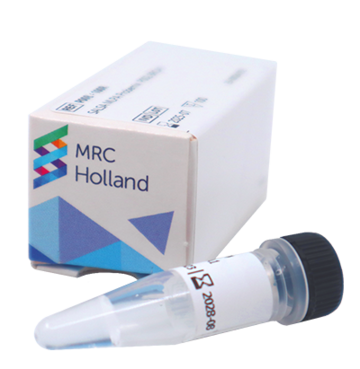P051 Parkinson mix 1

SALSA® MLPA® Probemix P051 Parkinson mix 1 detects duplications and triplications in the SNCA gene, deletions and duplications in the PARK2 gene, and the presence of one point mutation, G2019S in the LRRK2 gene, and can be used together with SALSA® MLPA® Probemix P052 Parkinson mix 2, which also detects deletions and duplications in the PARK2 gene, and the presence of the G2019S LRRK2 point mutation.

Contents:
- P051: 50 MLPA probes, including 9 probes for the PARK7 region (RUO, 1 upstream), 2 probes for ATP13A2 (RUO), 8 probes for PINK1 (RUO), 6 probes for SNCA (IVD), 13 probes for the PARK2 region (IVD) and 2 mutation-specific probes for SNCA A30P (RUO) and LRRK2 G2019S (IVD).
- P052: 50 MLPA probes, including 2 probes for ATP13A2 (RUO), 9 probes for UCHL1 (RUO), 12 probes for PARK2 (IVD), 7 probes for LRRK2 (RUO), 6 probes for GCH1 (RUO, 1 upstream), 1 probe for CAV1 (RUO), 1 probe for CAV2 (RUO), and 1 mutation-specific probe for LRRK2 G2019S (IVD).

Tissue: genomic DNA isolated from human peripheral whole blood.

Application: early-onset (PARK2 deletions/duplication, SNCA triplications, LRRK2 G2019S mutation) and late-onset (SNCA duplications, LRRK2 G2019S mutations) Parkinson's disease.

IVDR certified and registered for in vitro diagnostic (IVD) use in selected territories.
